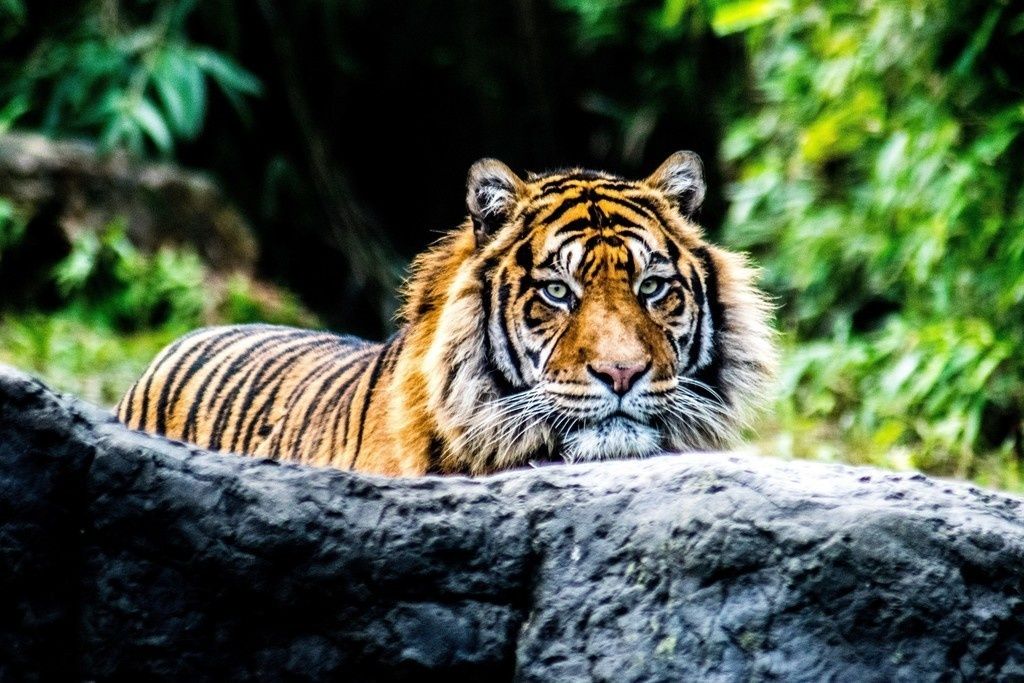The tiger is an iconic species, and over the years, its number has been dwindling. Tiger conservation in India aims to stop this majestic animal from going extinct while preserving its natural habitat.
Importance of Tiger Conservation in India

Around the 20th century, it had been estimated that the amount of untamed tigers ran in thousands. The Wildlife Institute of India, along side many prominent tiger reserves in India, has conducted tiger estimation surveys by collaborating with NGOs. The tiger may be a unique wild hunter, who plays a pivotal role within the health and variety of the ecosystem.
It’s the apex predator within the organic phenomenon , it maintains the balance between herbivores and therefore the vegetation they prey on . If tigers go extinct, it’s a sign that the ecosystem isn’t protected and it’ll cease to exist, after a brief period. Lets know about tiger conservation in india.
How Do Tigers Help the Environment?
If a species is extinct, it leaves behind a scar that affects the entire ecosystem. Hence, the necessity for tiger conservation in India isn’t just to guard this beautiful species but also to make sure they live long enough to guard their forests and supply optimum ecological services like clean water, air, and stable temperatures.
The tiger range has declined by 95 percent, this has left the species’ population isolated and fragmented within the remaining forests of Asia. The range that’s remaining for tigers is in peril because it can get reduced within the future by nearly half, this is often due to the unsustainable agricultural expansion and urbanization.
Tiger reserves in India provide a home territory that helps with the protection and restoration of this species in order that they will survive this century and beyond.
Ethical Tourism: the way to Travel Without Leaving a Footprint

Many tourists fail to believe the carbon footprint they leave behind once they visit a vacation spot. Tourism features a huge impact on the earth , albeit we will be unaware of it sometimes .
Vehicle emissions, overexploitation of cities, and excessive consumption of resources have an impression on the ecosystem. But, there’s how you’ll combat sustainable tourism once you travel and respect the environment.
Ethical or sustainable tourism is taking under consideration this and future consequences – social, economic, and environmental- in order that they’re controlled, while the requirements of the visitors, host communities, and therefore the tourism industry are fulfilled.
This suggests you’ve got to travel consciously and check out to form a coffee impact on the environment and therefore the local culture. Here are some suggestions on ethical tourism and the way you’ll travel without leaving a footprint:
If you’re planning a visit to any tiger reserve in India, choose a corporation that gives quality service and has respect for the environment.
Avoid overconsuming or wasting natural resources like water.
Properly eliminate waste, always recycle.
When visiting a natural space, don’t litter.
Do not disturb the flora and fauna, especially if there are the protected species around.
Top Tiger Reserves in India You Should Visit

India houses almost 75 percent of the world’s tiger population, and you must make a trip to a tiger reserve at least once in your life. Here are the top tiger reserves in India you must visit:
In Sundarban park in West Bengal , the tiger makes his round with unmatched stealth and beauty . The air feels wet and damp, while the silence is interrupted by the melodious singing of birds and roar of motorboats. Inside these world’s largest mangrove forests, creeks and tributaries form an intricate system of networks. Sometimes, they meet one another , and at others, stray elsewhere.
Tourists out on a ship ride are given their money’s worth while crossing them. albeit you’re unaware, the large cat and saltwater crocodile observe you in the least times, watching every step you create . However, sometimes, look up, as there’s action on the trees too. a spread of birds, from brahminy kite to whistling teals, call this their home and declare that from time to time with a loud cry, song or chirp. So if you are planing for Sundarban Safari Check Royal Sundarban Tourism. Lets know about more tiger conservation in india.
AC/Non AC Tour, AC Deluxe Cottage, Delicious Menu, Experienced Tour Guide, Personal Car. 12 Regular Spots, Folk Dance, Car, Boat, Room Sanitization, Check Travellers Reviews. AC & Non AC Package.
Bandhavgarh National Park- Madhya Pradesh

Bandhavgarh park is home to over 100 tigers, who are liberal to roam round the area. There are a spread of other species like leopards, deer, and so on. a quick visit to the present lush location may be a must.
Ranthambore National Park- Rajasthan
Ranthambore park is sort of on the brink of the populated area . The tigers housed here only increase in numbers. There are special trail packages that are offered by authorities, which can make your trip easy and fun.
Jim Corbett park – Uttarakhand
The iconic Corbett park is that the oldest park in India. It’s the foremost popular park in India and is about perfectly among the Nainital hills and serene northern texture. The Dhikala forest lodge is popular for its wildlife and you’re likely to identify a tiger here, quite anywhere else within the area.
So, subsequent time you’re getting to visit any of the famous tiger reserves in India make sure that you propose a visit with a reputed and quality organization like Tiger Safari to hit the road and see what the large cats are up to!
